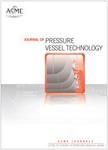版权所有:内蒙古大学图书馆 技术提供:维普资讯• 智图
内蒙古自治区呼和浩特市赛罕区大学西街235号 邮编: 010021

作者机构:Tufts Univ Dept Mech Engn Medford MA 02155 USA
出 版 物:《JOURNAL OF PRESSURE VESSEL TECHNOLOGY-TRANSACTIONS OF THE ASME》 (美国机械工程师学会汇刊:压力容器技术杂志)
年 卷 期:1999年第121卷第4期
页 面:393-399页
核心收录:
学科分类:08[工学] 0807[工学-动力工程及工程热物理] 0802[工学-机械工程]
主 题:Pipes Adaptive control Flanges Heat Electric arcs Materials processing Vessels Modeling Control algorithms Control systems Pyrometers Gain scheduling Welding Feedback Temperature Computer simulation Stainless steel
摘 要:Scan orbital welding of cylindrical vessel, flange, and piping parts is performed by their rapid revolution under a radially or axially translated heat source, with its power modulated so as to implement a specified thermal distribution. Thus, the plasma-arc welding torch sweeps the stainless steel surface to generate a desirable temperature field and the concomitant material features. A numerical simulation of the thermal field is developed for off-line analysis. On this basis, a lumped thermal regulator of the heat-affected zone, employing infrared temperature feedback at a single spot, as well as standard PI, gain scheduling, and self-tuning control algorithms is tested. The thermal model is also employed for real-rime torch efficiency identification and compensation. The numerical reference model serves as the basis for an in-process adaptive thermal control system to regulate the temperature field, using thermal feedback from the infrared pyrometer. A distributed-parameter control strategy with guidance of the torch,notion and power by a new weighted attraction strategy to randomly sampled points, is tested on scan-welded flanges. The regulator is validated computationally and experimentally and its applicability To other scanned processing of materials is considered.